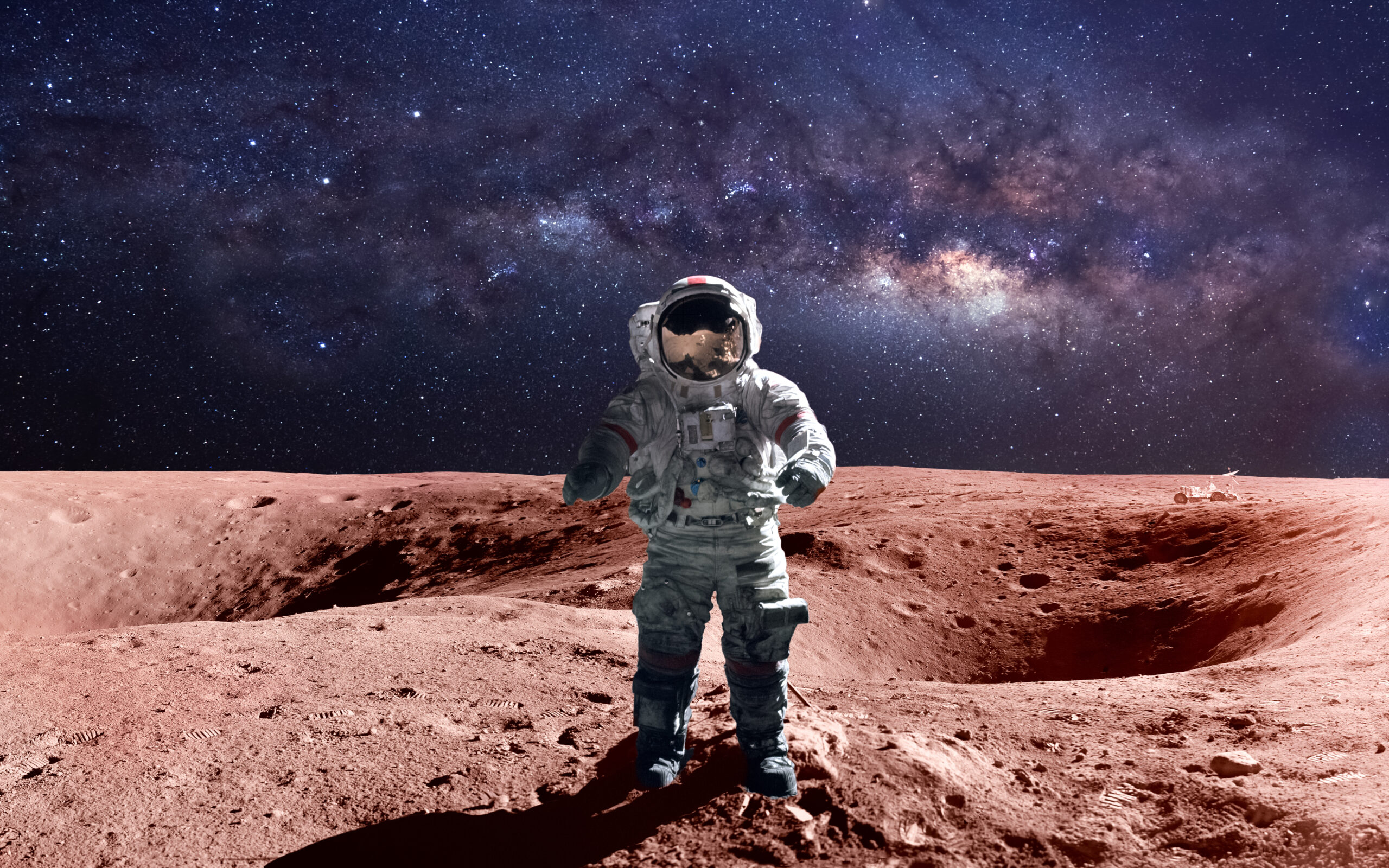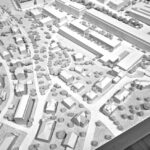Why This 24-Year-Old Could Be the First Person Ever to Step Foot on Mars

When most kids dream of outer space, it’s usually a phase—something fueled by movies, picture books, or a fleeting fascination with stars. But for one young woman, that spark never faded. In fact, it grew into something much bigger: a life mission that has her standing on the edge of making history.
Before she could even spell “astronaut,” she was already mapping out Mars. Now in her twenties, she’s no longer just imagining space travel—she’s preparing for it. And if the stars align, she might just become the first human to ever set foot on another planet.
How does someone go from backyard dreams to NASA-level training? And what drives a person to dedicate their entire life to a goal that might take decades to reach—if it ever happens at all? Her journey is as fascinating as it is unlikely. And it all started with a cartoon.
How a Cartoon Sparked a Cosmic Obsession
The mission began not in a lab or a classroom—but on a living room screen. Alyssa Carson was just three years old when she first saw The Backyardigans, an animated series about five adventurous animal friends. In one particular episode, the crew embarked on an imaginary mission to Mars. That was it. That was the moment. While most kids might imitate the show by building a cardboard rocket, Alyssa didn’t just play astronaut—she decided she’d be one.
That night, she turned to her father and declared her plan with the kind of certainty only a toddler could have: “Daddy, I want to be an astronaut and go to Mars.” Like many parents hearing the words “princess,” “pirate,” or “paleontologist,” Bert Carson nodded along supportively. But unlike most childhood dreams, this one didn’t fizzle out after a week. It snowballed.
From that point forward, Alyssa became obsessed—in the best possible way. She asked for books about planets, documentaries about space travel, and anything NASA-related. By the time she was six, her idea of fun was memorizing maps of Mars. Her dad recalls walking in on her quietly studying a Martian landscape and asking what she was doing. Her answer? “When we get to Mars, I need to know where we are.”
From Space Camp to Space Talks
At seven years old, Alyssa Carson didn’t just want to learn about space—she wanted to train for it. That’s when her father signed her up for her first NASA Space Camp in Huntsville, Alabama. While other kids spent their school breaks building sandcastles or perfecting bike tricks, Alyssa was building rockets, simulating Mars landings, and diving headfirst into microgravity training.
But this wasn’t just a one-time experience. She went back again and again—eventually becoming the first person to attend all three NASA Space Camps in the world: the U.S., Canada, and Turkey. Along the way, she adopted the call sign “Blueberry” (more on that later), directed fellow cadets during mock missions, and began to stand out not just as a camper, but as a leader.
By age 11, Alyssa delivered her first public talk to hundreds of kids at a 4-H camp. A year later, she became the youngest panelist at a NASA-hosted Mars conference in Washington, D.C., where she spoke alongside seasoned scientists and astronauts. At 13, she was already on the TEDx stage—three times, in fact—sharing her vision for the red planet in Romania, Austria, and Greece. This wasn’t just a kid with a big dream anymore. She was a recognized voice in the space community.
She rubbed shoulders with NASA administrators, consulted with scientists, and began crafting a personal brand dedicated to space exploration. Her blog, social media platforms, and public appearances now inspire thousands of young dreamers, many of whom see her as proof that space isn’t just for movie characters—it’s for anyone bold enough to start early and stick with it.
Blueberry Takes Off: Building the Astronaut Resume
If nicknames are earned, Alyssa’s is well-deserved. At her second visit to space camp, she wanted the signature blue jumpsuit that mimicked real astronaut gear. But none were small enough to fit her. Her solution? Wear a darker knock-off version that ended up earning her the nickname “Blueberry.” The name stuck—so much so that it’s now her online handle, call sign, and unofficial badge of honor.
But behind the playful moniker is an incredibly serious resume. By her mid-teens, Alyssa had already logged more space-related training hours than most adults ever will. She speaks four languages—English, French, Spanish, and Mandarin—knowing that communication is just as vital in space as oxygen. She’s been to 26 countries, attended over 20 space camps, and participated in advanced astronautics programs like the prestigious Project PoSSUM (Polar Suborbital Science in the Upper Mesosphere).
That program, an elite training initiative run in collaboration with Embry-Riddle Aeronautical University, gave Alyssa access to real-world astronaut simulations. Think hyperbaric chamber training, microgravity tests, spacesuit evaluations, and high-altitude flights—all designed to simulate conditions humans would face on Mars missions. She even completed an underwater training course to get used to the disorienting effects of weightlessness.
In 2016, at just 15 years old, she became the youngest person ever accepted into and graduate from the Advanced PoSSUM Academy, officially making her certified to go to space as a research astronaut trainee. And just to round it all out? She also earned her pilot’s license.
While other students were preparing for their next math test, Alyssa was preparing to survive in space. She’s proof that becoming an astronaut doesn’t start with a NASA job application—it starts with a relentless pursuit of preparation.
Mars or Bust: Why the Red Planet Matters
For Alyssa Carson, going to Mars isn’t just about checking a bucket-list item off early. It’s about laying the groundwork for something much larger than herself—something humanity might one day depend on. While she jokes that Venus is “a bit hot and horrible,” her passion for Mars runs deep, especially given her academic focus on astrobiology—the study of life in the universe.
In her own words, “Mars is kind of like our next destination… It’s a little more inviting to send people to.” That invitation, however, isn’t just about easier temperatures or dramatic red landscapes—it’s about potential. The possibility that Mars once supported life—or still could—has captivated scientists for decades. And for Carson, the idea of being one of the first humans to step foot on that alien soil isn’t just thrilling, it’s scientifically urgent.
She points out that while we’ve sent countless rovers, landers, and satellites to study Mars, there’s only so much remote-controlled robots can do. “Nothing can compete with the amount of information we’re able to gain once we send people to Mars,” she explained in an interview. For her, a human presence isn’t just a dream—it’s a necessity to advance science and possibly answer one of the biggest questions of all time: are we alone?
But Carson’s motivation isn’t entirely academic. She sees Mars as the next logical step for human survival. In her view, Earth won’t be habitable forever—whether due to climate change, natural cycles, or eventual solar burnout. Colonizing Mars isn’t escapism. It’s preparation.
That’s why, when she talks about the red planet, it’s never just in terms of “if.” It’s always a matter of “when.”
The Long Road to Mars: Tech, Timing & Training
NASA’s timeline is ambitious but grounded in reality. Before astronauts even approach Mars, they’ll have to spend extended time on the Moon as part of preparatory missions. These lunar expeditions are meant to test human endurance, radiation shielding, and the long-term sustainability of life beyond Earth. If the Moon is the dress rehearsal, Mars is the main event.
There’s also the issue of planetary alignment. Earth and Mars only line up favorably for travel about once every 26 months. Miss the window, and you could be waiting years for another shot. Add to that the health risks of long-duration spaceflight—bone loss, radiation exposure, psychological stress—and the sheer magnitude of the mission becomes clear.
Carson, ever the optimist, believes we can shorten the journey with technological advances. Some projections estimate that newer propulsion methods could reduce travel time to as little as six weeks, which would be a game-changer for crew safety and mission planning. But even if the rockets are ready, there’s still the question of what awaits when they land. Can we build habitats that withstand dust storms and extreme temperatures? Can we grow food on Martian soil? Can we even return home?
To prepare for these unknowns, Carson and other future explorers are taking part in simulations and survival training here on Earth—like underwater disorientation courses, hypoxia drills, and even mock Mars habitats. The work is grueling, and the outcome still uncertain. But for Carson, the journey is as important as the destination. Because one day, someone’s going to be the first to step on Mars—and she wants to make sure she’s ready when that day comes.
Inspiring a Generation: Her Message to Young Dreamers
Alyssa Carson’s mission doesn’t end with Mars. In fact, a big part of her focus is right here on Earth—inspiring the next generation to aim higher, dream bigger, and take their goals seriously, even when they sound impossible.
Through her blog, her social media platforms, and her frequent public speaking engagements, Carson has become a voice of encouragement for young people, especially girls interested in science and space. She doesn’t present herself as a genius or a prodigy, but as someone who chose a dream early and worked relentlessly toward it. And that’s the key to her message: you don’t have to be extraordinary—you just have to be committed.
Her talks aren’t filled with glossy motivational fluff. Instead, she tells stories about trial and error, about giving a “very bad” first speech to 400 kids, about being too small to fit the official astronaut suit and wearing a knock-off instead. She speaks from experience, not a pedestal. And that makes her relatable.
She’s also honest about the cost. There have been sacrifices—time, energy, normalcy. Her father, who now manages her career, admits it hasn’t always been easy watching his daughter pursue something so far from safe. But both of them believe it’s worth it—not just for Alyssa’s dream, but for what it represents to others. If one kid watching a space cartoon can one day help colonize Mars, then maybe the impossible isn’t as far away as it seems.
So You Want to Be an Astronaut?
Becoming an astronaut is not just a career path; it’s a calling. A dream that floats in the minds of many, ignited by childhood fantasies, stories of space exploration, and the infinite unknowns of the cosmos. But let’s be real — it’s not as simple as clicking “apply” and hoping for a ride to the stars.
What Does It Take to Reach for the Stars?
At the heart of it, becoming an astronaut requires more than just passion for space. It demands a unique combination of education, experience, physical fitness, and, perhaps most importantly, resilience. Let’s break it down:
- Educational Foundation: Every astronaut starts with a solid educational background, often with a master’s degree in a STEM field (science, technology, engineering, or mathematics). Whether it’s in biological sciences, physical sciences, or even mathematics, that knowledge is crucial to tackling the complex problems that arise in space.
- Experience That Matters: A degree alone won’t cut it. You need professional experience. NASA requires at least three years of relevant experience post-degree, or 1,000 hours as a pilot-in-command for pilots. For medical professionals, time spent in residency can count.
- Physical and Mental Endurance: Space isn’t kind to the human body. Astronauts undergo intense physical exams to ensure their health can withstand the grueling demands of space travel. But being physically fit is just one part of the equation — mental toughness and the ability to work as a cohesive team are just as important. Astronauts work in isolated, high-pressure environments, and they need to stay sharp, focused, and supportive of their crew.
- Skills Beyond Science: Leadership, teamwork, and communication are key. The best astronauts are those who can inspire, collaborate, and solve problems under pressure. Whether it’s conducting scientific experiments or performing a spacewalk, astronauts rely on their ability to work together and remain calm when things go awry.
The Road to the Stars: Training and Beyond
If you think the hard work ends once you’re selected, think again. Astronaut training is rigorous and demanding. At NASA’s Johnson Space Center, astronauts spend two years learning everything from spacewalking to controlling a robotic arm. They fly T-38 jet planes, practice in simulators, and even train underwater to prepare for spacewalks. Yes, you might find yourself in a 350-pound suit, submerged underwater, practicing tasks that could save your life on a mission.
But that’s not all. The journey doesn’t end with getting selected. Astronauts often serve in a variety of roles—whether it’s working in mission control, flying planes, or conducting scientific experiments on Earth. It’s not always glamorous, but every task is a piece of the puzzle that prepares them for the bigger mission: space exploration.
Why Failure Is the First Mission for Most Astronaut Hopefuls
Here’s the thing: the odds of getting selected as an astronaut are slim. In a recent selection process, NASA had over 6,000 applicants, but only eight were chosen. That’s less than 1 in 1,000. It’s a brutal reality, but it’s not impossible. And even if you don’t get selected right away, keep applying. Keep striving. Keep learning.
More importantly, enjoy the journey. Do what you love. Pursue a career that excites you, whether it’s in aerospace engineering, biology, or physics. Because the truth is, you don’t need to be an astronaut to explore. Do what lights you up, and who knows — you may just find yourself gazing at Earth from above one day.
So, do you have what it takes? Are you ready to embark on the path that could lead you beyond the stars? It’s a long road, but it’s one that’s worth every step.
Beyond Earth: What Comes Next
As ambitious as her Mars dream is, Alyssa Carson doesn’t view it as the final destination. In fact, for her, stepping onto the red planet is just the beginning. Her broader mission is to play a role in reshaping humanity’s future—one where interplanetary living isn’t science fiction, but a survival strategy.
She’s not alone in this vision. NASA, SpaceX, and other space agencies are actively laying the groundwork for long-term human presence beyond Earth. Plans are already in place for lunar missions, deep-space transport systems, and simulated Martian environments—all crucial steps toward making Mars a viable home. Carson hopes to not only be a part of that foundation, but to help shape it.
Her studies in astrobiology serve this mission well. She’s keen on discovering whether Mars once hosted life—or still could. But beyond scientific curiosity, Carson sees Mars as a symbolic leap: a signal that humans are ready to explore, adapt, and evolve on a planetary scale. “It’s not about packing up Earth and moving,” she’s said, “but about preparing for a future that’s bigger than any one world.”
In the coming years, Carson plans to continue her academic and physical training, pursue advanced research, and stay closely aligned with programs like Project PoSSUM and NASA collaborations. She’ll also keep using her platform to promote STEM education and inspire new generations to take part in this unfolding chapter of human history.
And as for the big question—what her first words on Mars might be? She hasn’t decided yet. Maybe that’s because, like the rest of her journey, the story is still being written.
Featured Image Source: Shutterstock
Loading...







